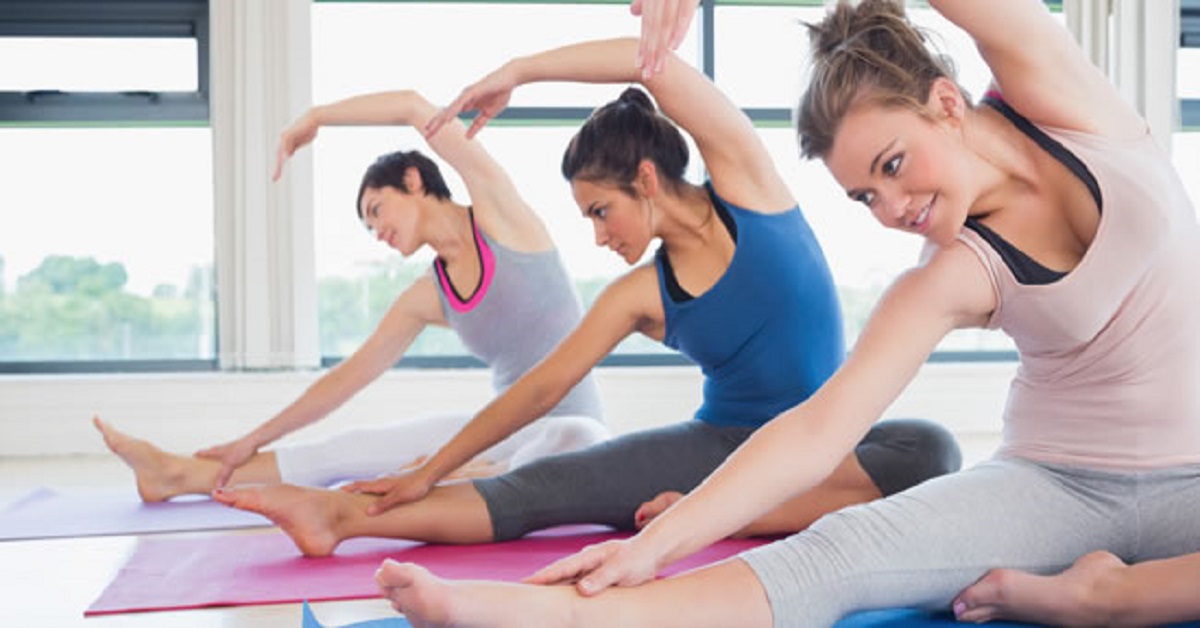
Practicing yoga helps you gain control of all your senses and asanas. Here is a yoga pose to try.
Four-Limbed Staff Pose
Learn four-limbed staff pose because it is frequently practiced as part of the traditional Sun Salutation sequence.
(chaht-tour-ANG-ah don-DAHS-anna)
chaturanga = four limbs (chatur = four
anga = limb)
danda = staff (refers to the spine, the central “staff” or support of the body)
Four-Limbed Staff Pose: Step-by-Step Instructions

Step 1
Perform Adho Mukha Svanasana, then Plank Pose. Firm your shoulder blades against your back ribs and press your tailbone toward your pubis.
Step 2
With an exhalation slowly lower your torso and legs to a few inches above and parallel to the floor. There’s a tendency in this pose for the lower back to sway toward the floor and the tailbone to poke up toward the ceiling. Throughout your stay in this position, keep the tailbone firmly in place and the legs very active and turned slightly inward. Draw the pubis toward the navel.
Step 3
Keep the space between the shoulder blades broad. Don’t let the elbows splay out to the sides; hold them in by the sides of the torso and push them back toward the heels. Press the bases of the index fingers firmly to the floor. Lift the top of the sternum and your head to look forward.
Step 4
Chaturanga Dandasana is one of the positions in the Sun Salutation sequence. You can also practice this pose individually for anywhere from 10 to 30 seconds. Release with an exhalation. Either lay yourself lightly down on the floor or push strongly back to Adho Mukha Svanasana, lifting through the top thighs and the tailbone.
READ ALSO: Yoga: a means to balance your life
Pose Information
Sanskrit Name
Chaturanga Dandasana
Pose Level: 1
Contraindications and Cautions
Carpal tunnel syndrome
Pregnancy
Modifications and Props
You can get a feel for this challenging position by practicing it standing upright. Stand and face a wall, a few inches away from the wall. Press your hands against the wall, slightly lower than the level of your shoulders. Imagine that you are trying to push yourself away from the wall, but the firmness of your shoulder blades against the back prevents any movement. Lengthen your tailbone into your heels and lift the top of your sternum toward the ceiling.
Deepen the Pose
Even experienced students have difficulty with Chaturanga Dandasana. Lay a thickly rolled blanket on the floor below your Plank Pose, parallel to your spine. Lower yourself lightly onto this support. Use it minimally, just enough to keep yourself afloat.
Preparatory Poses
Plank Pose
Bhujangasana
Urdhva Mukha Svanasana
Follow-up Poses
Adho Mukha Svanasana
Urdhva Mukha Svanasana
Beginner’s Tip
The completed form of Chaturanga Dandasana is quite difficult to perform at first, until your arms, back, and legs are strong enough to support you. From Plank Pose, begin by lowering your knees to the floor and then, with an exhalation, lower your sternum to within an inch or two above the floor.
Benefits
Strengthens the arms and wrists
Tones the abdomen
Partnering
A partner can help you learn to anchor the pelvis in this pose and lengthen the spine. Perform Chaturanga Dandasana (using a blanket support under your thighs if needed). Have your partner straddle your waist, pigeon-toe his/her feet, and squeeze the top rim of your pelvis with his/her lower legs. Your partner can drag your pelvis back slightly, toward the feet, while you lift the top of your sternum in the opposite direction.
Variations
If possible, slowly roll over the balls of your feet onto the tops of your feet and shift the torso slightly forward. This will bring the hands back beside your waist and increase the challenge of the position.

Post Your Comments